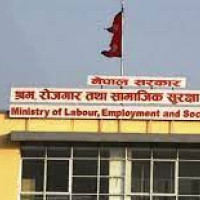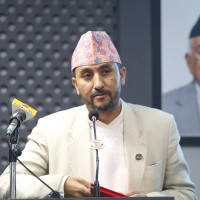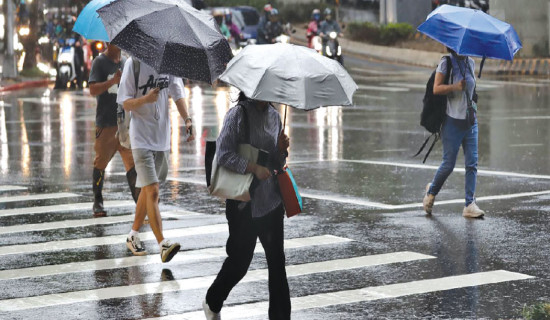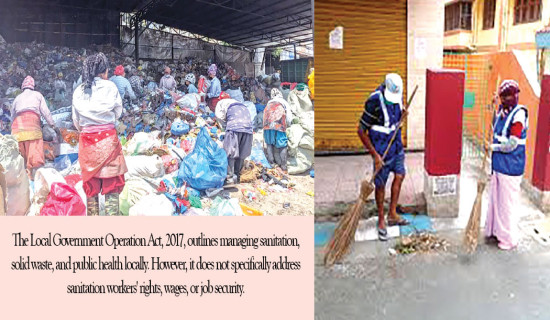- Tuesday, 16 December 2025
Govt mulls selling burnt vehicle debris
Kathmandu, Oct. 15: The burnt-out shells of vehicles of different ministries inside Singha Durbar area have now been dumped at the premises behind the International Convention Centre in New Baneshwor.
The burnt vehicles from the Gen Z protests are piled up in the area marking their resting place before giving them to recyclable waste collectors.
The Mechanical Division under the Ministry of Physical Infrastructure and Transport is currently heading the large-scale removal and management of this metallic debris.
Joint Secretary at the Department Bhuwan Adhikari confirmed that the goal was to clear all the burnt vehicles out of Singha Durbar and after that the government will figure out what to do with them, likely selling the scrap through a tender process. “The burnt remains of over 500 vehicles -- ranging from two-wheelers to four-wheelers -- are being systematically collected and relocated for further inspection and disposal,” Adhikari said.
Once the entire collection is complete, the authorities face a secondary challenge -- formal disposal.
Adhikari explained the official steps ahead – after all the vehicles are collected, the police will prepare a field inspection report of the burned vehicles, which will then be processed through a tendering procedure. However, he admitted, “it is still uncertain when and how the process will begin.”
Counting the cost: The scale of destruction
The damage extends far beyond the capital. According to various sources, a substantial number of private and government-owned four-wheelers (including cars, jeeps, vans, dozers, and even fire engines) and two-wheelers (motorcycles and scooters) were torched across the country. Preliminary estimates maintain that over 3,000 vehicles were destroyed nationwide, with 1,026 four-wheelers and 1,983 motorcycles and scooters reduced to ashes.
Environmental consequences
During the height of the unrest, the sky over Kathmandu was darkened and choked with thick, unpleasant smoke from the fires. While a subsequent light rainfall provided a temporary measure of relief and cleared the air, the deep environmental hazard remains. The burning of thousands of vehicles released a complex cocktail of highly toxic substances into the atmosphere.
Ujjwal Upadhyay, a climate change and disaster risk reduction analyst, warned that the immediate effects of the smoke have given way to a persistent, unseen threat.
Although the recent heavy rain may have washed away surface ash, the remaining debris -- including batteries, melted plastics and shattered glass -- could continue to contaminate the environment if not managed with extreme care.
Similarly, the burning of plastic compounds is known to produce dangerous byproducts, including
dioxins, which pose a significant, long-term threat to public health, Upadhyay said.
To transform the tragedy into a symbol of defiance, analyst Upadhyay cited a powerful American precedent: the fate of the World Trade Center
wreckage. The steel from the 9/11 destruction, he explained, was melted down and forged into the LPD-19 warship.
This missile launcher, capable of deploying over a dozen combat helicopters like the “Sea Cobra” and “Super Stallion,” now guards the skies over the Hudson River near New York, standing as a potent message that the nation emerged stronger from the attack, Upadhyay said.
Upadhyay urged Nepal to adopt this constructive spirit, “We should reuse the iron wreckage of these burnt vehicles to build some symbolic
infrastructure that would remind people of this incident, turning the material loss into a lasting monument to resilience.”
















